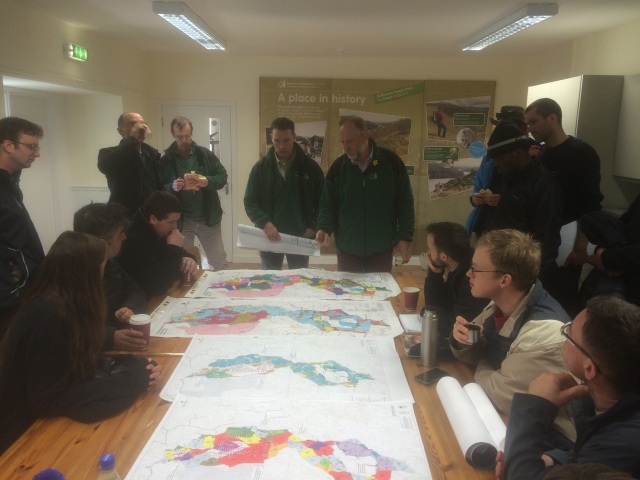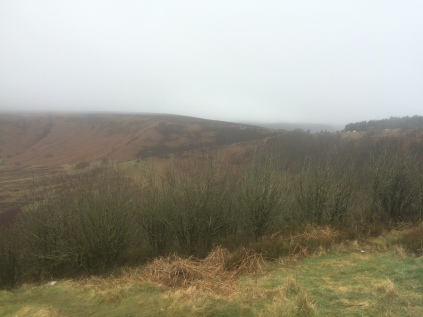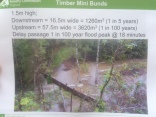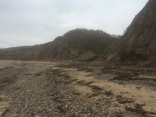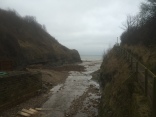I’ve been interested in the edible forest garden idea for over twenty years and have planted and designed several myself in Ireland in that time, and visited several others. But they have never lived up to my expectations and were largely unproductive, despite sourcing as many perennial vegetables and other interesting edible plants as I could. Here I review the claims made for them and what evidence there is to support the idea- and conclude that, as Permaculture founder Bill Mollison said in the first place, in temperate regions you are far better growing your fruit trees and vegetables separately.
Temperate permaculture– is this a passing fad, an idealist’s hobby or is there a case for wider promotion of the practice?
-
Introduction- Design By Nature: Permaculture and the Forest Garden Concept
“Permaculture” – derived from permanent agriculture – is a concept of sustainable land use and design coined and developed by Bill Mollison and David Holmgren in 1974. Mollison defined the concept as:
The conscious design and maintenance of agriculturally productive ecosystems which have the diversity, stability, and resilience of natural ecosystems
(Mollison 1988).
Since then, permaculture has grown into a worldwide movement of activists and designers applying permaculture principles to the whole of society (Holmgren 2002). Permaculture is more an approach or philosophy than any specific technology, but where it has come under academic scrutiny, many of the kinds of practices frequently advocated have been found lacking in supporting evidence (Chalker-Scott 2010).
In this essay we shall focus on one of the best-known expressions of permaculture design, the edible forest garden or food forest for temperate regions, which are designed with the intention of mimicking the structure and functions of natural woodlands. Successful integration of trees with agriculture for multiple environmental and crop protection functions, nitrogen fixation and fodder is well established in traditional systems in many parts of Europe (Rigueiro-Rodriguez et al 2009), and is gaining renewed interest today as an essential part of agricultural sustainability. It is worth examining why, then, while forest gardens continue to be popular amongst the permaculture fraternity and the sustainable food movement, they have attracted little academic research, and very little uptake by farmers, orchardists or market gardeners. As we shall see, evidence to support the claims that forest gardens achieve both low inputs and high yields is lacking, and there are good theoretical reasons why the concept is unlikely to succeed in temperate zones.
-
Definitions, Origins and extent of current practice
Edible forest gardens –also known as forest gardens, woodland gardens, food forests or analog forests have been defined as “a perennial polyculture of multi-purpose plants” (Jacke 2005) and are comparable to the multistory agroforestry systems common across the tropics known as homegardens (Kumar and Nairn 2006). Robert de J. Hart is generally credited with being the first to bring the concept to Europe in the 1980s when he started the UK’s first forest garden in Shropshire (Hart 1996). He cites as his influences Smith (1950), Yeoman (1971) and Sholto Douglas (1985), and his work in turn went on to influence Patrick Whitefield (1996) and Martin Crawford (2014) in the UK and Jacke and Toensmeier (2005) in the US.
Based on the definitions used by the authors cited above, for this essay we will define edible forest gardens as:
Gardens which are primarily or entirely perennial polycultures, containing at least three identifiable vertical layers of food-bearing plants including trees, shrubs and perennial herbaceous understory.
This definition differentiates them from both annual vegetable gardens as well as other well-established agroforestry systems such as broad-scale silvoarable systems, which generally include only one or two annual crops in between rows of trees (Rigueiro-Rodriguez et al 2009).
Crawford (2014) estimates there are some 800 hectares of forest gardens in the UK and lists approximately 160 forest gardens in his Forest Garden Network, including 9 in Ireland, 30 in Europe and a handful in the US. They range in size from small gardens of as little as 50 square meters to smallholdings of up to about 5 hectares, with the smallest area for a “fully functional” forest garden estimated at around 1000 square meters.
Perhaps ironically given their continued popularity in permaculture, Mollison did not himself advocate perennial edible forest gardens for temperate regions. He was well aware that temperate gardening was characterized by annual or biennial seed crops and tubers and by the need to store root vegetables over the winter, and that tree crops are more likely to be for fruit than for staples (Mollison 1988). The academic literature also indicates that temperate gardens have traditionally tended to be based on annual vegetables, often arranged in relatively formal beds and generally requiring full sunshine (Ninez 1987; Vogl and Vogl-Lukasser 2003).

Despite this, Jacke and Toensmeier (2005) cite the ancient practice of coppicing of woodlots for firewood and poles as an example of traditional forest garden practice. However, coppice woodlands are not primarily food gardens, and generally only involve one or two layers, the coppiced hazel and sometimes a standard timber crop. In the UK, orchard trees were commonly grown with an intercrop of soft fruit—blackcurrants or gooseberries—prior to 1955; less commonly some (mainly annual) vegetable crops were included, and there are examples of intercropping between trees with annual vegetables (Kumar and Nairn 2006). One of the few examples that do meet the definition of a three-layered system included asparagus as a perennial vegetable (Newman 1986, citing Fekete 1958), but apart from these cases it seems unlikely there was any widespread traditional practice of genuine three-story perennial edible homegardens in Europe or the US.
In a recent effort to correct the dearth of research on edible forest gardens, the UK Permaculture Association began a 10-year forest garden trial in 2009, publishing a baseline survey of 117 forest gardens in the Europe and the US in 2013 (Remiarz 2013, 2014). The oldest sites were started in the 1980s, with the majority starting since 2000. Nearly half reported that “food self-reliance” was their main objective, with the majority saying this has been largely achieved, though what proportion of each gardener’s food requirements was met is not quantified. In fact, the species lists suggest that in reality the crops grown in most of these forest gardens differ little from the fruit and green vegetables typically grown in traditional home gardens from the 1950s (Ninez 1987).
This apparent mismatch between aspirations and practice requires some explanation: why are forest gardens still believed in and promoted—at least within the permaculture fraternity—if the practice falls so far short of expectations? To answer this we now consider the philosophy of copying nature underpinning the forest garden concept.
-
Philosophy: Return to the Garden?
Along with other more recent influential permaculture writers (Crawford 2005, Jacke 2010), Hart (1996) saw planting forest gardens as not only a practical way of growing food but also about ushering in new ways of living and seeing the world:
My mini-forest is the culmination of many years’ study and practice of the system that has come to be known as Agroforestry or Permaculture, and which many people, including myself, believe has a major role to play in the evolution of an ‘alternative’, holistic world order. A Green World. The World of Gaia.
– Robert Hart (1996)

The belief underpinning permaculture that “nature knows best” and agricultural systems are best shaped in the image of the natural world stems from the “organismal metaphor” proposed in the early 20th Century (Clements 1916), seeing ecosystems as behaving like a “super-organism,” and on Odum’s cybernetics, seeing ecosystems as analogous to machines (Odum 1981, cf. Holmgren 2001). Conservationists such as John Muir then popularized these ideas of an ideal state of “natural balance” for both nature and man (Marris 2011), but while still a dominant idea in both popular culture and much environmental policy (Botkin 2012), most ecologists today see natural systems as being characterized by continual change and adaptation rather than any ideal state of stability, and some suggest that the ecosystem concept itself may have outlived its usefulness (O’Neill 2001).
Permaculture and other alternative approaches to farming are rooted in the post-1960s counter-culture’s beliefs about the need to prepare for an inevitable collapse of industrial society and a consequent return to subsistence farming (Gold and Hanover 1987). Botkin (2012) traces this idea of a “Fall” and “Return to Eden” back to the roots of Judeo-Christianity, a powerful metaphor that also helped shape early ecology and environmentalism. Perhaps these deeply held cultural beliefs help explain the ongoing interest in close-to-nature approaches to farming such as forest gardens, which are seen as a way of restoring a presumed ideal state of natural balance that humans have disrupted by clearing the forests and tilling the land.
-
Design Principles: Diversity, Complexity and Balance
There is a common-sense appeal to the permaculture concept of mimicking nature. Unlike a conventional annual vegetable garden with its ongoing needs of digging, weeding and applications of fertilisers, forest gardens are intended to be self-maintaining, with minimum inputs or labour, and to function with the diversity, complexity and the perceived “balance” of a natural woodland while conveying the following advantages (Hart, 1996; Jacke 2005; Crawford 2010):
- the trees make use of vertical space which in principle would allow more food to be grown in the same area;
- perennial plants don’t require annual tilling of the soil and planting of new seeds;
- the diversity of polycultures should reduce problems with species-specific pathogens;
- mulches and nitrogen fixing plants, common to other agroforestry practices obviate or reduce the need for fertilizer applications;
- diverse systems are more resilient due to greater complexity;
- forest gardens have multiple functions and yields including therapeutic and environmental benefits.
Taking each in turn we can establish theoretical explanations for why these principles in themselves are insufficient to make forest gardens viable as alternative food production systems.
Vertical space
Yields from tree crops are limited by a trade-off between yield produced and the energy used by the tree itself in maintaining its woody structure. In addition, while yields increase over time as the trees grow larger, they will also produce more shade and roots (which will extend at least as far as the leaves), both of which are likely to reduce the yield of understory plants via competition for light, water, and nutrients. Crawford recommends up to 50% wider spacing than in conventional orchards to allow enough light through to the lower layers, and so most of the advantages of the vertical space are lost. We will compare figures for yields of tree crops and arable crops below.
Annuals vs Perennials
Perennials have the advantage of not requiring annual cultivation and planting, and often emerge earlier in the spring than their annual counterparts, but have the disadvantage of being static and not easily changed in response to changing conditions. By contrast, annual crops can reach optimal yields within just one or two seasons, and an annual system is much more flexible in that a different variety or crop can easily be switched to in the event of disease, climate change or even nutrient depletion. Annual grains were the first plants to be domesticated for the very reason that, in setting seed each year, they have lent themselves to dramatic improvements for yield and other traits through plant breeding (Kingsbury 2009).
Monocultures vs polycultures: Diversity and Intercropping
Diversity is one of the “principles of permaculture” (Holmgren 2002) providing the notional underpinning for forest gardens, yet this diversity may compromise yields. The competition between species has already been noted. Also, polycultures lend themselves less to mechanization of cultivation and harvest, and nuts that fall from trees are likely to be lost in any groundcover vegetation. However, some researchers have pointed to the work already done on intercropping—traditionally practiced around the world—as a basis for promoting more complex polycultures such as forest gardens (Gowland 1996; Watson 1998). Resource partitioning (soil and light), the ability of combinations of crops to access more soil nutrients than monocrops, and modification of the microclimate, have been shown to increase yields compared to the individual crops grown alone. (Vandermeer 1989, Innis 1996).
While intercropping has also been shown to increase yields in relatively simple silvoarable systems such as vegetables between fruit trees (Newman 1986), Vandemeer also found cases where yields were lower if inappropriate crops were chosen. Whitefield (2013) was also aware of this, pointing out that the largest gain from intercropping is gained from the first crop addition and is likely to decline with the addition of each subsequent crop. In a review, Denison (2012) found that achieving optimum spacing in intercropped systems was difficult, and that while intercropping increased yields compared to the average of the two crops, they were often still less than the best crop grown as a monocrop. Thus, for many farmers the pragmatic choice was to grow the single best yielding crop alone.
The apparent lack of variety in the crops we eat is also cited as a reason to prefer forest gardens over conventional agriculture, but there are good reasons why only some crops have been adopted apart from ease of improvement breeding mentioned above. Being readily storable and transportable, corn, rice and wheat alone account for nearly half of humankind’s calorific intake. Another reason is pollination- a crop suitable for agriculture requires reliable methods of pollination to produce good yields, and so these grains tend to be either self-fertile, pollinated by many different insects, or wind pollinated, in contrast to many other plants that have co-evolved with specialist pollinators (Warren 2015).
Efficiency: inputs and outputs
Along with Jacke, Crawford (2014) argues that it is the efficiency of the system that acts of a measure of sustainability, not the total yield. He claims that modern agriculture often achieves an energy return of 5:1, and sometimes less than 1, with more energy going into the system than coming out, while forest gardens can achieve as much as 40:1. Even if this were true in terms of absolute physical energy- it is not explained how these figures are arrived at- fertilizer accounts for only about 2% of global energy consumption and farming without it would be far more labour-intensive and require up to four times the land to grow the same amount of food (Smil 2011). Thus, while low-input systems may be less dependent on fossil fuels overall, this advantage is vastly outweighed by the land-sparing benefits of continued increases in production from modern agriculture.
Systems, resilience and complexity
Permaculture advocates the importance of the number of connections between elements in a design, arguing that such diversity of interactions leads to greater resilience: if one synergistic relationship breaks down, plenty of others are there to pick up the slack and prevent system failure. Natural systems are presumed to be in a natural “balance” which can easily be disrupted, with a change to one part unbalancing the whole system
Yet according to Denison (2012), an evolutionary perspective applied to agriculture reveals that natural systems have evolved more by chance than by any design (Gleason 1926) and that the defining unit in terms of function, adaptability and resilience is the individual species and not the system as a whole. Plant assemblies in nature may be as malleable as in a designed garden, readily incorporating newcomers in the form of aliens, invasive or naturalized plants and often continuing to function well even after the loss of many native species (Wilkinson 2004).
Multiple functions- habitat and therapy
Other kinds of “yields”, such as the aesthetic and therapeutic value of gardening and working close to nature, are often cited as highly valued reasons for promoting forest gardens (Hart 1996; Jacke 2005). There is no question that these are important aspects of gardening, but may be served as well if not better in other ways. Urban gardens, though not primarily for food, already provide habitat for a wealth of biodiversity (Goddard et al 2010). Equally, there is good evidence that gardening and gardens have great therapeutic value (Haith 2015) but again, there is no reason to suppose edible forest gardens will significantly add value to this.
-
Yields- Land Sharing or Land Sparing?
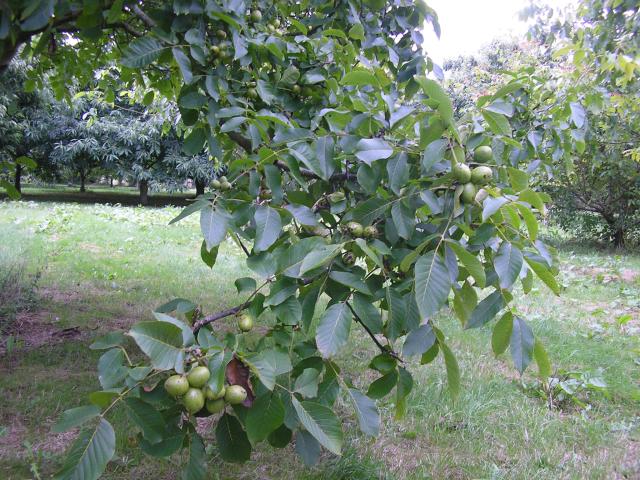
Despite absence of data, claims for high yields produced in such temperate permaculture systems can be extravagant (Sustainability Centre 2015). Hart (1996) for example states that “the forest garden is the most productive of all forms of land use”, supporting some of the most densely populated countries on earth. This might be plausible in tropical climates, at least in terms of total biomass production if not food yields, but the limitations of light and the relatively narrow range of productive tree crops available in temperate zones make this an unlikely scenario for the UK.
Comparative yields of staple crops
In the UK, most food produced in forest gardens is fruit or leafy green vegetables. Yet for forest gardens to prove their worth in production terms, they need to compete with other staple crops with high value of protein and carbohydrates. The main option for tree crops here is nuts.
Cobnuts (hazelnuts) can achieve yields of 3.5-4 tonnes/hectare 8-10 years after planting (CALU 2006), walnuts potentially 1tonne/hectare and sweet chestnuts up to 4.75 t/ha (Crawford and Newman 2006). This is still a long way from typical UK yields for barley and oats of 5-6 t/ha or wheat over 8 t/ha (DEFRA 2014). Potatoes can yield over 40 t/ha (FAOSTAT 2013) -assuming 80% water content, this would equate to 8 t/ha in dry weight. These best-case values for nut trees in the UK are not found in forest gardens with a complex understory, but generally in monocultures. Additionally, nut yields in the UK vary from year to year and are vulnerable to poor weather during pollination or early wind-fall (Crossland 2013) and hence are unlikely to grow much beyond their current niche market.
Discussion of yields is important because the driving rationale of the forest garden is that modern agriculture is unsustainable, laying the blame at the feet of monocultural systems based on annual grains and pulses. However, despite often well-founded fears of soil erosion and nutrient depletion, global yields of these crops continue to increase through improved varieties and technology (Ausubel et al 2012; Grau et al 2013). Indeed, total land used for agriculture may have already peaked (Our World in Data 2015) as a result of ongoing improvements in efficiency, and substantial area of land has been “spared” for nature as a result (Stevenson et al 2010). This dramatic and sustained increase in agricultural productivity over the past century has resulted in only 2% of the population in the U.S. being required to farm (AFBF 2015). In these respects then, modern farming is arguably more resilient because of its continual innovation and adaptability.
6. Conclusions
The three—or more—layered perennial edible food forest we have examined here is an attempt to improve agriculture and food production by mimicking nature. What works well in the tropics however does not seem to work well in cooler climes. While interest and research into sourcing promising novel crops and new cultivars from around the world continues, most temperate forest gardens seem little different from the fruit gardens and orchards commonly found in Britain prior to the 1950s.
Temperate forest gardens do offer great potential for further research on plant interactions within multi-strata perennial systems, and there is great scope for improvements in cultivars of many tree crops. A warming climate may offer a greater range of possibilities for novel crops to be grown in the UK, as is being tried, for example, by Otter Farm in Devon where they are now growing olives and almonds, but it is as yet unclear whether multi-tiered systems will provide any significant advantage.
Despite the lack of promise forest gardens show in becoming a viable alternative to industrial farming, the ongoing interest in permaculture philosophy together with public concern about sustainability will ensure that they continue to be experimented with by enthusiasts. The myth of the need to return to a “balance with nature” remains a powerful influence in many areas of public policy well beyond the permaculture movement and will continue to shape ideas about food, farming and conservation for a long time to come.
References
AFBF 2015 American Farm Bureau Federation [ONLINE] Fast Facts about Agriculture The Voice of Agriculture Accessible from: http://www.fb.org/newsroom/fastfacts/ [URL accessed 12-12-2015]
Ausubel, J.H., Wernick, I.K., Wagonner, P.E. 2012 Peak Farmland and the Prospect for Land Sparing Population and Development Review 38 (Supplement) 221-242 (2012)
Botkin, D.B. 2012 The Moon in the Nautilus Shell: Discordant Harmonies Reconsidered OUP USA
Chalker-Scott, L. 2010 [ONLINE] Permaculture- My Final Thoughts [Accessible from http://gardenprofessors.com/permaculture-my-final-thoughts/ 18-02-2016]
Crawford, M. (2010) Creating a Forest Garden Green Books, Devon 2010
Crawford, M. 2014 [ONLINE] Accessible from: https://garnense.com/en/inspiration/depth-forest-garden-pioneer-martin-crawford [Accessed 13-12-15]
CALU 2006 [ONLINE] CALU TECHNICAL NOTES Ref: 050402 FARM WOODLANDS Hazelnut and walnut production Centre for Alternative Land Use, Bangor University
Accessible from: http://www.agmrc.org/media/cms/050402cobnutsandwalnuts_5a03afb4b3709.pdf [Accessed 9th December 2015]
Clements, F. E. (1916) Plant succession: An analysis of the development of vegetation
Washington, DC: Carnegie Institution of Washington
Crossland, M. E. 2013 An investigation into the viability of small-scale heartnut (Juglans ailantifolia var. cordifomis) production in the United Kingdom BSc in Environmental Science Faculty of Engineering and the Environment University of Southampton
DEFRA 2014 [ONLINE] Farming Statistics- Final crop areas, yields, livestock populations and agricultural workforce Department of Environment and Rural Affairs Accessible from: https://www.gov.uk/government/uploads/system/uploads/attachment_data/file/388470/structure-jun2014final-UK-18dec14.pdf [Accessed 9th December 2015]
Denison, R. F. (2012). Darwinian Agriculture: How Understanding Evolution Can Improve Agriculture. Princeton University Press
Douglas, J. Sholto & Hart, Robert A. de J. (1985) Forest farming : towards a solution to problems of world hunger and conservation Intermediate Technology Books 1985
Eliot, C. 2007 Method and metaphysics in Clements’s and Gleason’s ecological explanations Studies in History and Philosophy of Biological and Biomedical Sciences 38(1):85–109, 2007.
FAOSTAT 2013 [ONLINE] Food and Agriculture Organisation of the United Nations Statistics Division Accessible from :http://faostat3.fao.org/browse/Q/QC/E [Accessed 09-12-15]
Fekete, E.B. 1958 A Study Of The Functional Layout Of Some Mixed Horticultural Holdings In The Vale Of Evesham University of Bristol 1958
Fern, K. (2000) Plants for a Future- Edible and Useful Plants for a Healthier World Permanent Publications
Forest Garden Plants 2013 [ONLINE] Chestnuts as Staple Food? Accessible from: http://forestgardenplants.blogspot.co.uk/2013/01/plant-more-chestnut-trees.html[Accessed 13th December 2015]
Gleason,H. A. 1926 The Individualistic Concept of the Plant Association Bulletin of the Torrey Botanical Club, Vol. 53, No. 1. (Jan., 1926), pp. 7-26
Goddard, M.A., Dougill, A.J.H., Benton, T.G. 2010 Scaling up from gardens: biodiversity conservation in urban environments Trends in Ecology and Evolution, 25 (2010), pp. 90–98
Gowland, S. 1996 The Forest Garden Agroforestry Practice- with special reference to the UK. University of Bangor undergraduate thesis 1996: S107
Grau, R., Kuemmerle, T., and Macchi, L. 2013 Beyond ‘land sparing versus land sharing’: environmental heterogeneity, globalization and the balance between agricultural production and nature conservation Current Opinion in Environmental Sustainability 2013, 5:477–483
Haith, J. 2015 Horticulture and Ecotherapies: Improving health and wellbeing British Journal of Mental Health Nursing Dec 4th 2015
Hart, R. de J. 1996 Forest Gardening: Rediscovering Nature & Community in a Post-industrial Age Green Earth Books 1996
Holmgren, D. 2002 Permaculture: Principles and pathways Beyond Sustainability Holmgren Design Services
Innis, D.Q. (1997) Intercropping and the Scientific Basis of Traditional Agriculture Intermediate Technology Publications 1997
Jacke, D. and Toensmeier, E. (2005) Edible Forest Gardens Volume 1 (Vision and Theory) and 2 (Design and Practice)- Ecological Vision and Theory for Cool Temperate Permaculture Chelsea Green 2005
Kingsbury, N. 2009 Hybrid: the History and Science of Plant Breeding University of Chicago Press
Kumar, B.M. and Nair, P.K.R. (eds.) 2006 Tropical Homegardens: A Time-Tested Example of Sustainable Agroforestry Springer
Marris, E. 2011 Rambunctious Garden- Saving Nature in a Post-Wild World
Bloomsbury USA
Mollison, B. 1988 Permaculture- A Designer’s Manual Tagari Publications
Newman, S.M. 1986 A Pear and Vegetable Interculture System: Land Equivalent Ratio, Light Use Efficiency and Productivity Experimental Agriculture Volume 22 Issue 04 October 1986
Newman, S.M. and Crawford, 2006 Preliminary investigations and reflections on the potential of nut production from walnut and chestnut in the UK Proceedings of the Farm Woodland Forum Annual Meeting, 27th – 28th June 2006
Ninez, V.K. 1987 Household Gardens- Theoretical considerations on an old survival strategy Potatoes in Food Systems Research Series Report No. 1
Odum, H. and Odum, E.C. 1981, Energy Basis for Man and Nature
Otter Farm 2015 Climate Change Nursery [ONLINE] Available at: http://www.otterfarm.co.uk/products.htm [Accessed 13th December 2015]
Remiarz, T. 2013 Forest Gardens Baseline Survey 2013 Report UK permaculture Association
Remiarz, T. 2014 Ten-year Forest Garden Trial Year 3 Report UK Permaculture Association
Rigueiro-Rodriguez, A., McAdam, J., Mosquera-Losada, M.R. Agroforestry in Europe- Current Status and Future Prospects Springer 2009
Roser, Max 2015 [ONLINE] Arable land needed to produce a fixed quantity of crop products (change since 1961)
Our World in Data; Accessible at: http://ourworldindata.org/data/food-agriculture/land-use-in-agriculture/. [Accessed 12 December 15]
Smil, V. 2011 Nitrogen Cycle and World Food Production World Agriculture 2:9-1
Smith, J. Russell 1950 Tree Crops- A Permanent Agriculture The Devon-Adair Company New York
Sustainability Centre UK 2015 [ONLINE] Available at: http://www.sustainability-centre.org/forest-gardening.html [Accessed 12 December 15]
Stevenson, James R.; Villoria, Nelson; Byerlee, Derek; Kelley, Timothy; Maredia, Mywish 2010 Green Revolution research saved an estimated 18 to 27million hectares from being brought into agricultural production CGIAR Independent Science and Partnership Council
Vandermeer, J. (1989) The Ecology of Intercropping Cambridge University Press 1989
Warren, J. (2015) The Nature of Crops: How we came to Eat the Plants we Do CABI 2015
Watson, A.J. 1998 The Forest garden Concept University of Bangor Masters thesis 1998: S96
Wilkinson, D. 2004 The parable of Green Mountain: Ascension Island, ecosystem construction and ecological fitting Journal of Biogeography (J. Biogeogr.) (2004) 31, 1–4
Whitefield, Patrick (1996) How to Make a Forest Garden Permanent Publiciations
Whitefield, P. 2013 Permaculture- Back to Basics? Interview in The Land 14 Summer 2013
Yeomans, P.A. (1971) The City Forest –the Keyline Plan for the Human Revolution Keyline Publishing Sydney [ONLINE] Available at: Soil and Health Library: http://soilandhealth.org/wp-content/uploads/01aglibrary/010127yeomansIII/010127toc.html [Accessed 12th December 15]
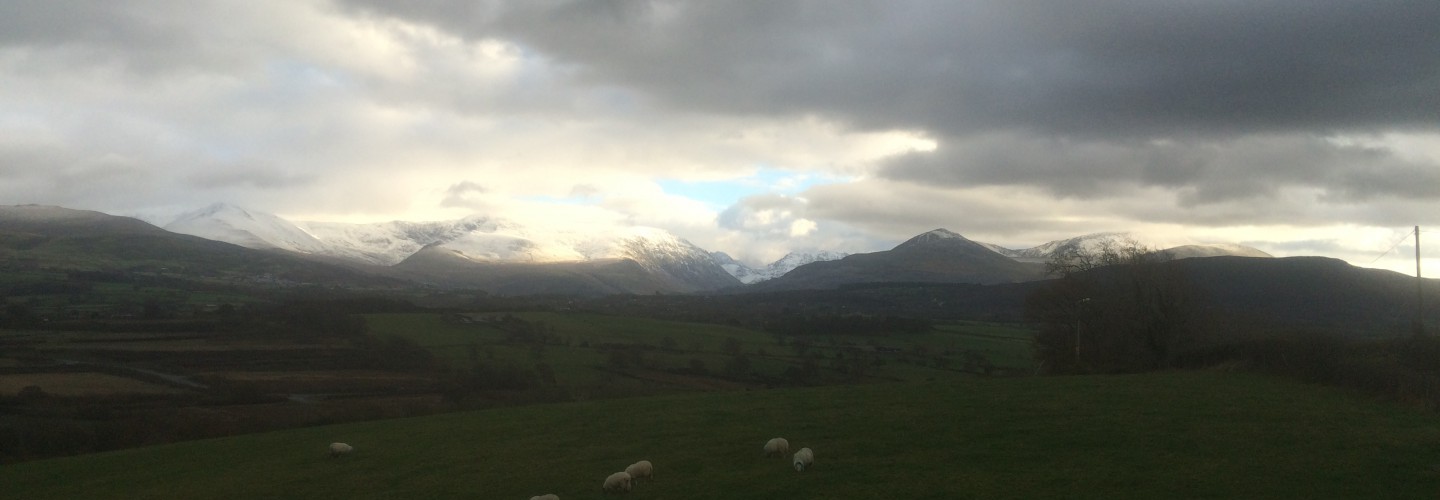
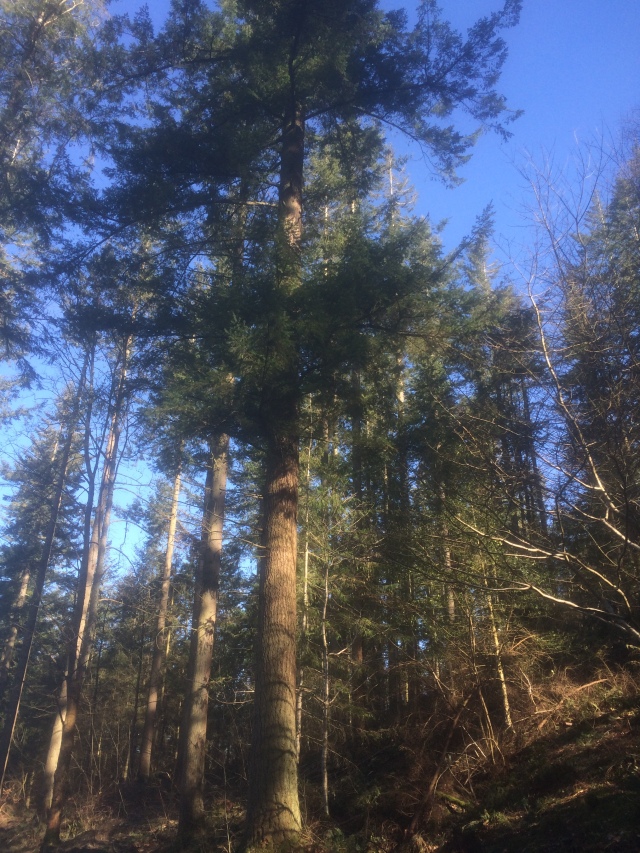
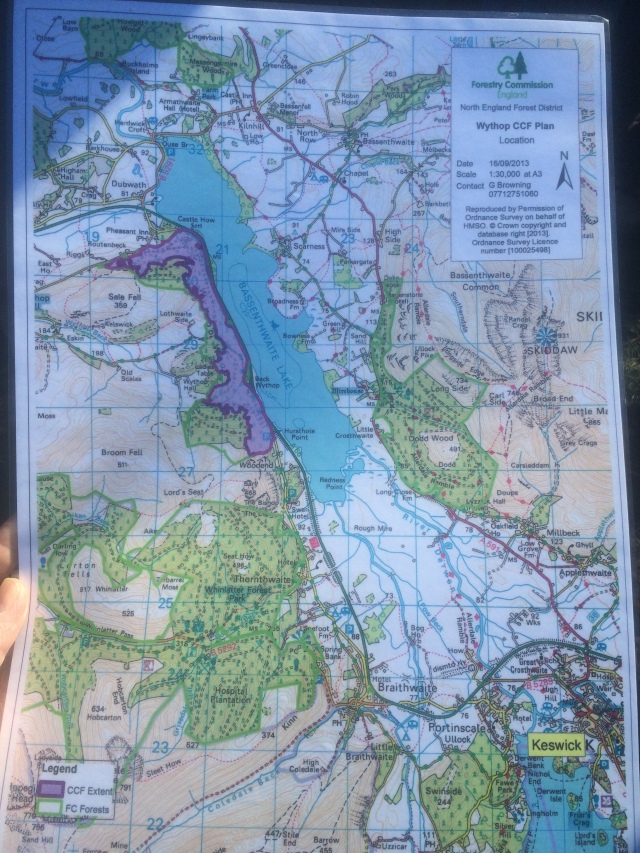
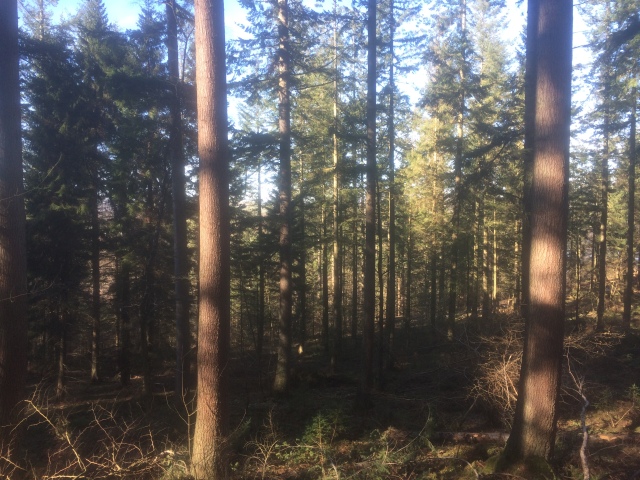

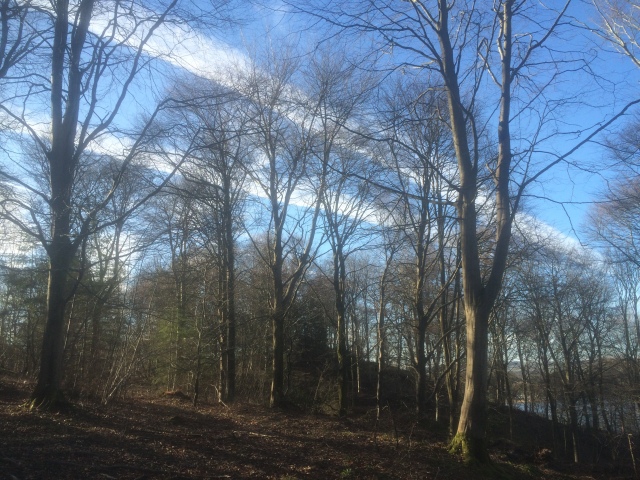
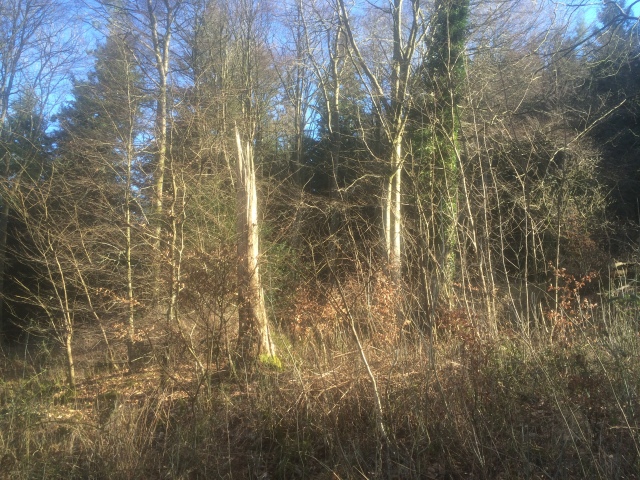

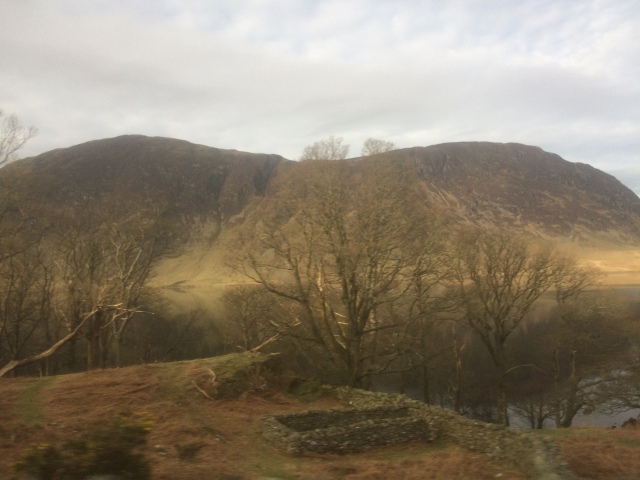





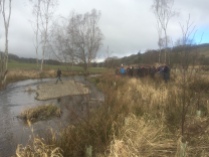
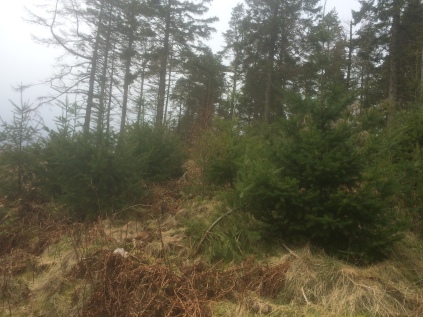




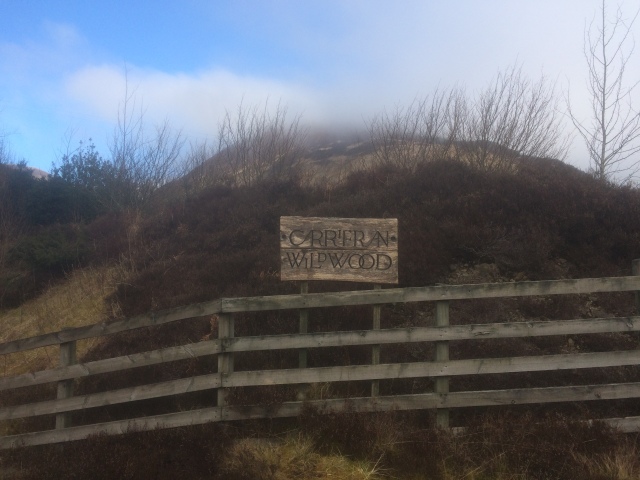
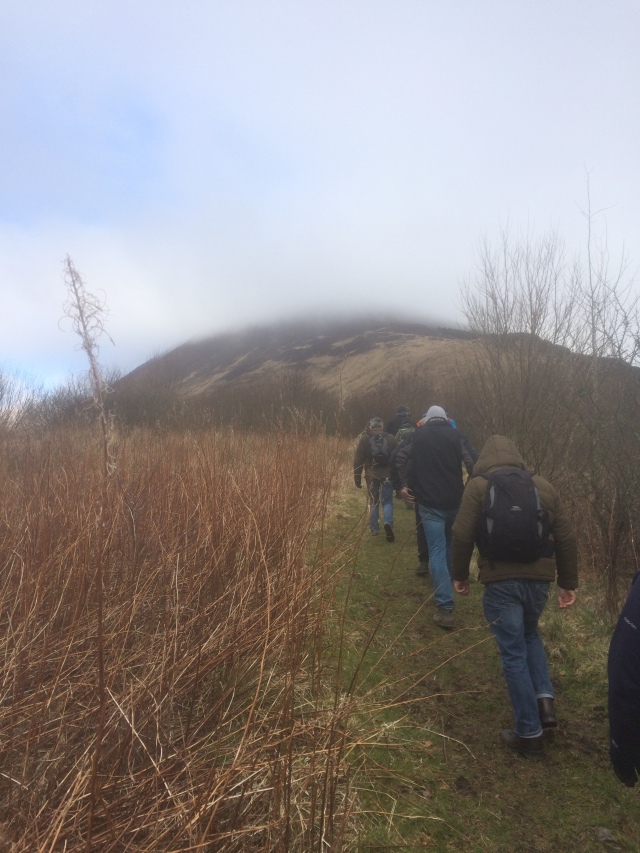

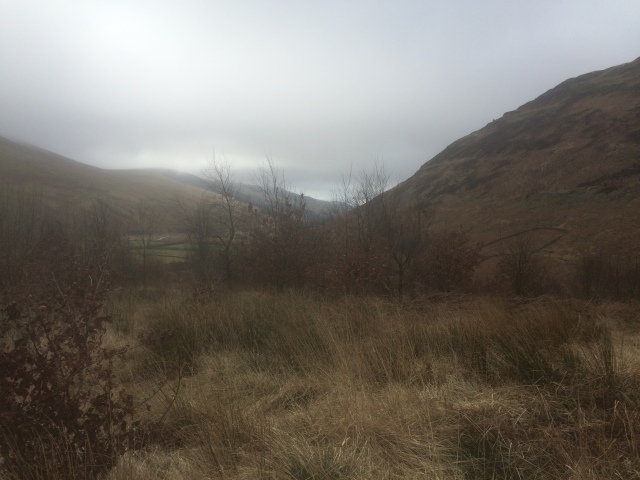
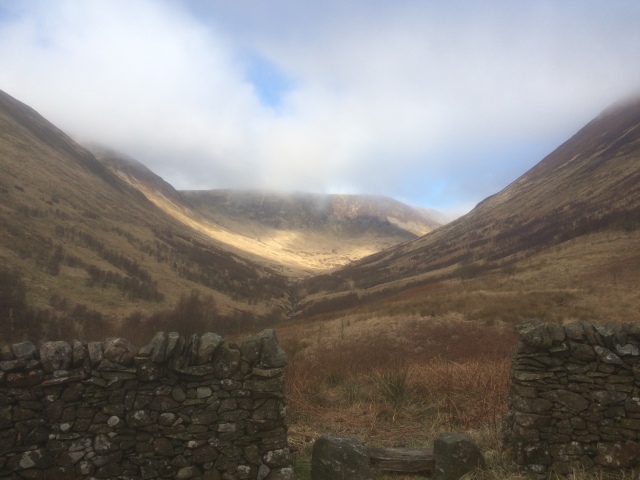
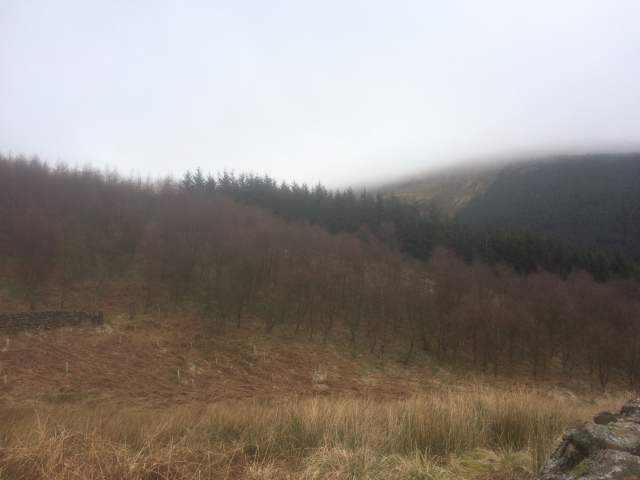
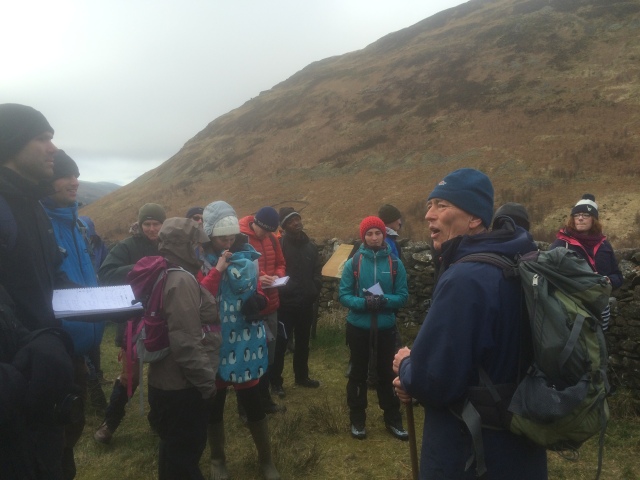
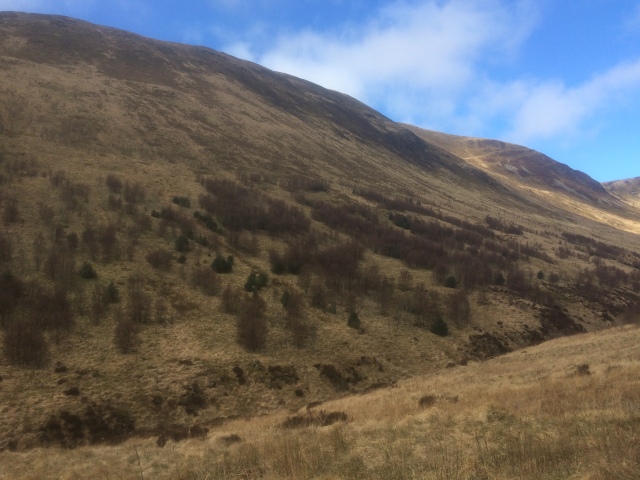
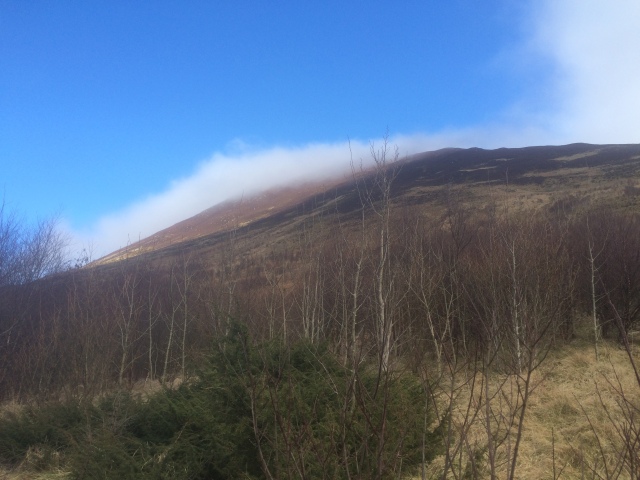
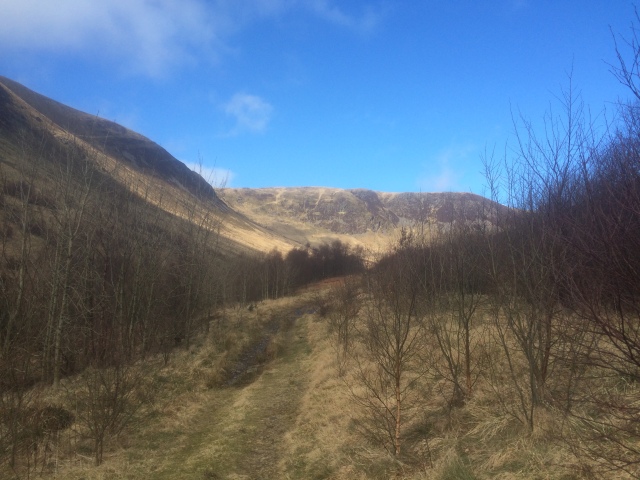
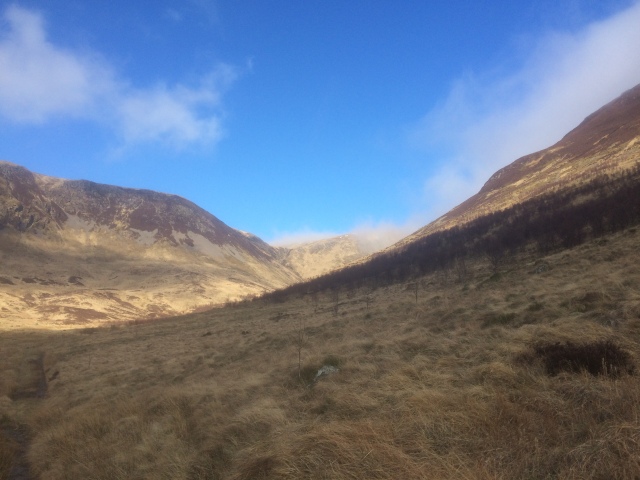
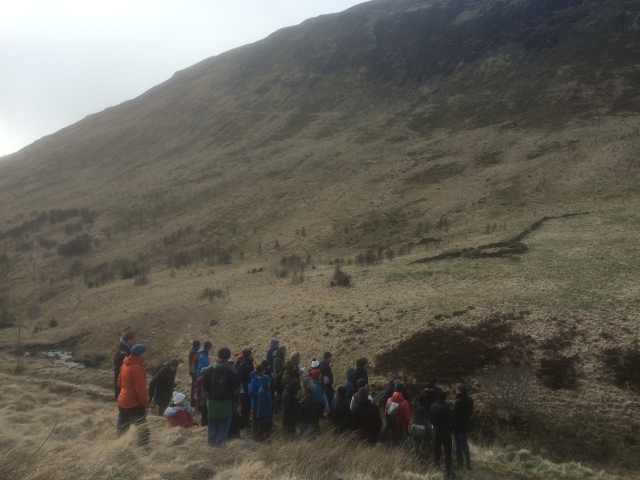
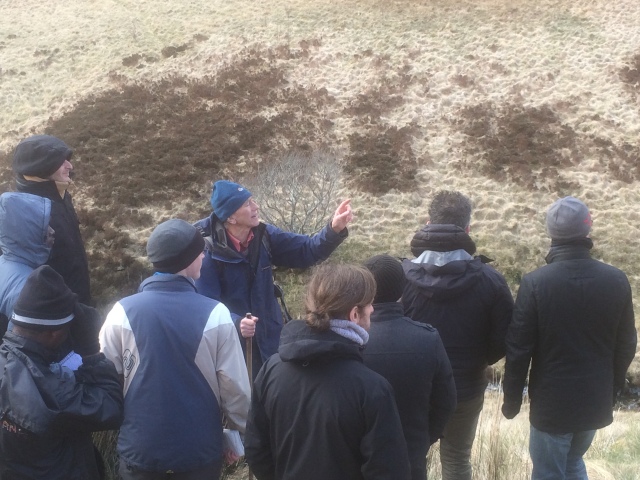



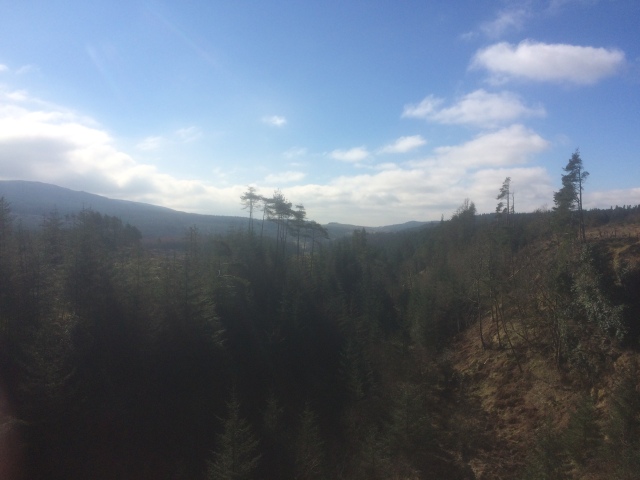
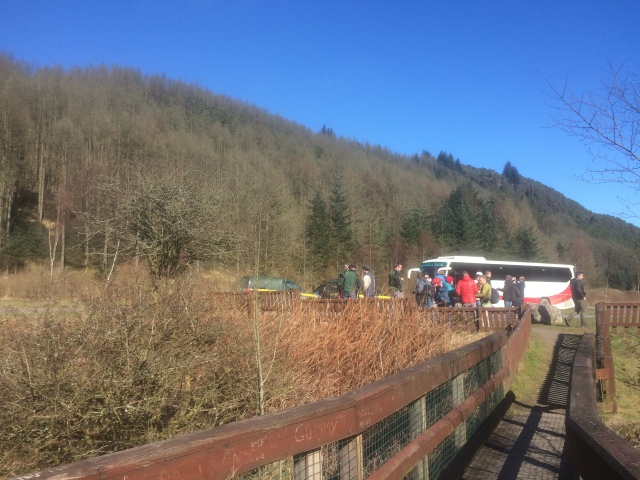 Above- larch stand due for sanitation felling
Above- larch stand due for sanitation felling